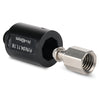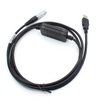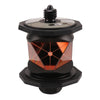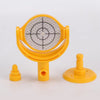How Many Types of Surveying Tripods Are There?
Surveying tripods are essential tools in the field of surveying, providing a stable platform for various surveying instruments. These tripods are designed to support equipment like total stations, theodolites, and levels, ensuring accuracy and precision in measurements. Understanding the different types of surveying tripods and their unique features can greatly enhance your surveying projects.
Advantages and Features of Surveying Tripods
1. Stability and Support
One of the primary advantages of surveying tripods is their ability to provide a stable base for surveying instruments. A well-constructed tripod minimizes vibrations and movements, which is crucial for accurate measurements. The three-legged design allows for stability on uneven terrain, making it an indispensable tool in various surveying environments.
2. Adjustability and Versatility
Surveying tripods are designed for versatility. Most models feature adjustable legs that can extend or retract, allowing users to set up their equipment at the desired height. This adjustability is particularly beneficial when working in diverse landscapes, from flat plains to hilly areas. Some tripods even come with bubble levels, ensuring that the instrument is perfectly aligned for precise readings.
3. Durability and Material Quality
The materials used in constructing surveying tripods significantly impact their performance and longevity. Many tripods are made from lightweight yet durable materials like aluminum or fiberglass. Aluminum tripods are known for their strength and weather resistance, while fiberglass models offer excellent stability and are less prone to thermal expansion. Investing in a high-quality tripod ensures it can withstand the rigors of outdoor use.

4. Portability
Portability is another important feature of surveying tripods. Many models are designed to be lightweight and foldable, making them easy to transport to different job sites. This feature is especially beneficial for surveyors who need to move equipment frequently. A tripod that is easy to carry can enhance efficiency and reduce setup time.
5. Compatibility with Surveying Equipment
Surveying tripods come in various designs to accommodate different types of surveying instruments. Some are specifically designed for total stations, while others are compatible with levels or theodolites. Understanding your equipment's requirements is crucial when selecting a tripod, as using the right type ensures optimal performance and accuracy.
How Many Types of Surveying Tripods?
Surveying tripods can be categorized into several types, each designed for specific applications and environments. Here are the most common types:
Wooden Tripods: Traditionally used for their stability and durability, wooden tripods are excellent for leveling instruments. They absorb vibrations well and are suitable for various terrains.
Aluminum Tripods: Lightweight and portable, aluminum tripods are popular for their strength and resistance to rust. They are a great choice for general surveying tasks.
Fiberglass Tripods: Known for their durability and resistance to environmental factors, fiberglass tripods are less affected by temperature changes, making them ideal for outdoor use.
Heavy-Duty Tripods: Designed for use in harsh conditions, heavy-duty tripods can support larger instruments and are built to withstand extreme weather.

Specialized Tripods: These tripods cater to specific instruments or applications, such as those designed for GPS surveying or aerial photography.
When selecting surveying tripods, several factors should be considered to ensure you choose a model that meets your needs:
Weight and Portability: Depending on your job requirements, consider the weight of the tripod. If you frequently move between locations, a lightweight, portable model may be ideal.
Material and Build Quality: Assess the materials used in the tripod’s construction. Opt for durable materials like aluminum or fiberglass that can withstand outdoor conditions.
Height Range: Ensure that the tripod can adjust to the height required for your specific surveying tasks. A good height range enhances flexibility in different environments.
Compatibility: Make sure the tripod is compatible with your surveying instruments. Check the mounting options to ensure a secure fit.
Budget: While it’s essential to invest in quality equipment, there are options available for various budgets. Determine your needs and find a tripod that offers the best value.

Conclusion
In summary, surveying tripods play a crucial role in the accuracy and efficiency of surveying projects. With various types available, including wooden, aluminum, fiberglass, and heavy-duty models, there’s a tripod suited for every application. When selecting a tripod, consider factors such as stability, adjustability, and material quality to ensure you choose the best option.
For those looking to enhance their surveying capabilities, investing in a high-quality surveying tripod is essential.
If you’re in the market for a surveying tripod for sale, contact SMTOER manufacturers today to discover reliable options that meet all your surveying needs!




